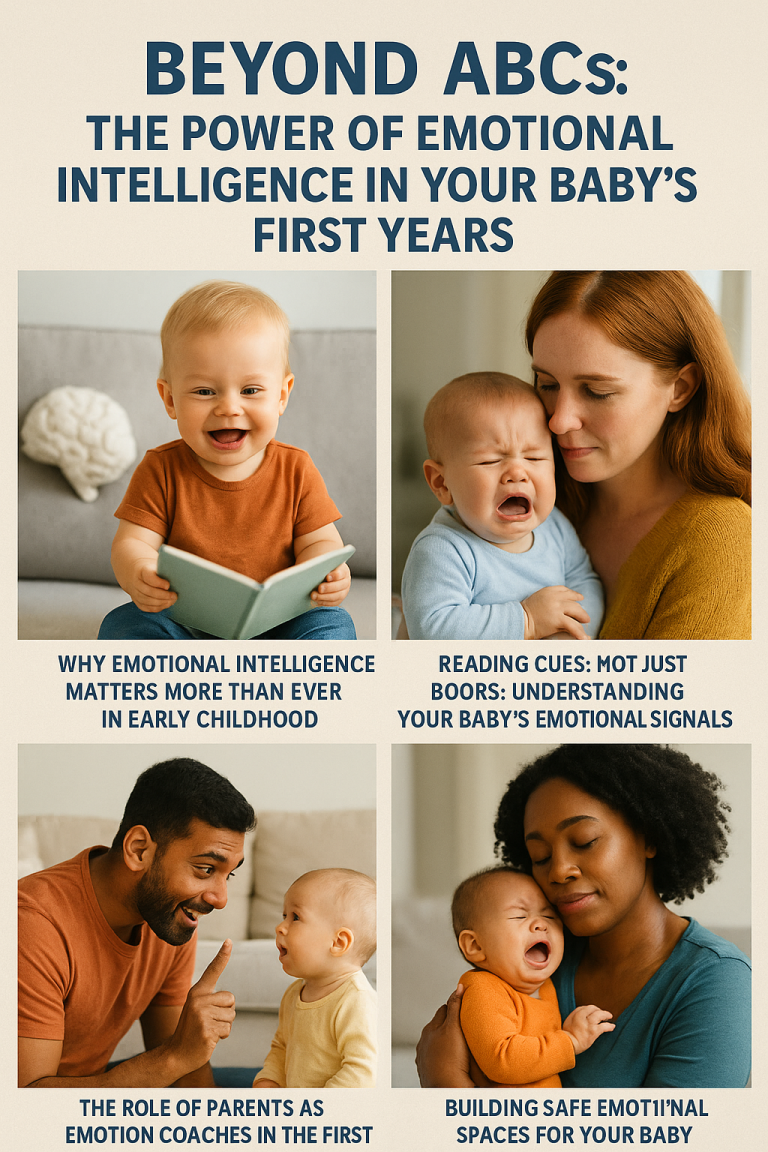
Parenting is an intricate tapestry woven with love, discipline, and guidance. As the world becomes more complex, a child’s ability to navigate emotions and social situations is increasingly paramount. Understanding Emotional Intelligence in Children is the cornerstone of fostering resilience, empathy, and strong interpersonal skills. This article delves into the importance of emotional intelligence (EI) in parenting and provides actionable insights to cultivate it in children.
Understanding Emotional Intelligence in Children
Emotional intelligence is the ability to recognize, understand, and manage one’s emotions while also being attuned to the emotions of others. For children, this skill set is vital in forming relationships, handling conflicts, and developing self-awareness.
Children who develop emotional intelligence early in life tend to exhibit higher adaptability, stronger coping mechanisms, and greater academic and social success. The five pillars of EI—self-awareness, self-regulation, motivation, empathy, and social skills—lay the foundation for emotional growth. Encouraging children to identify and articulate their emotions builds emotional literacy, a crucial component of self-awareness.
Recognizing Emotional Cues
Infants and toddlers express emotions through facial expressions, body language, and vocal tones before they acquire verbal communication skills. As children grow, parents can guide them in labeling emotions such as frustration, excitement, and sadness. Using everyday scenarios to teach emotional vocabulary helps children articulate their feelings effectively.
Modeling Emotional Intelligence
Children learn by observation. Parents who manage stress constructively, resolve conflicts calmly, and express emotions in a healthy manner provide a blueprint for their children. Demonstrating self-regulation in challenging moments shows children that emotions are manageable rather than overwhelming forces.
Teaching Emotional Regulation and Self-Control
Emotional regulation is the ability to manage emotional responses in various situations. Self-control, an extension of emotional regulation, is essential for decision-making and impulse management.
Developing Coping Mechanisms
Teaching children how to handle frustration, disappointment, and anger equips them with lifelong skills. Techniques such as deep breathing, mindfulness exercises, and cognitive reframing help children self-soothe in stressful situations. Encouraging children to take a pause before reacting allows them to process emotions before responding impulsively.
The Role of Routine in Emotional Stability
A structured environment fosters emotional stability. Predictable daily routines provide children with a sense of security, reducing anxiety and emotional outbursts. Mealtime conversations, bedtime stories, and scheduled playtime contribute to a child’s emotional well-being.
Building Empathy and Social Skills
Empathy is the bridge that connects individuals emotionally. Children with strong empathetic skills demonstrate kindness, understanding, and the ability to appreciate perspectives different from their own.
Encouraging Perspective-Taking
Role-playing and storytelling are effective ways to enhance empathy. Encouraging children to imagine how others feel in various situations deepens their understanding of different emotions and social interactions.
Promoting Cooperation and Teamwork
Social skills are honed through collaborative activities. Group games, shared responsibilities, and community service instill teamwork, patience, and respect. Teaching children to take turns, share, and consider others’ needs builds the foundation for healthy relationships.
Effective Communication and Active Listening
Communication is more than words—it encompasses tone, body language, and listening skills. Teaching children to express themselves clearly and listen actively fosters meaningful connections.
Teaching Active Listening
Active listening involves more than just hearing words; it requires understanding and responding appropriately. Parents can model active listening by making eye contact, nodding, and paraphrasing what their child says to show they are engaged.
Encouraging Expressive Communication
Children should feel safe expressing their thoughts and emotions. Validating their feelings, even when setting boundaries, encourages openness. Instead of dismissing a child’s frustration, acknowledging it—“I see that you’re upset because your toy broke”—helps them feel heard and respected.
Positive Discipline and Conflict Resolution
Discipline should guide rather than punish. Positive Discipline and Conflict Resolution strategies focus on teaching rather than instilling fear or shame.
Setting Clear and Consistent Boundaries
Consistency in expectations fosters a sense of security. Clearly communicating rules and consequences in a calm, firm manner helps children understand boundaries without feeling controlled.
Teaching Problem-Solving Skills
Conflict is a natural part of life. Teaching children to resolve disputes peacefully—whether with siblings, friends, or classmates—equips them with valuable problem-solving skills. Encouraging negotiation, compromise, and the ability to see multiple perspectives strengthens their social intelligence.
Reinforcing Positive Behavior
Acknowledging and reinforcing good behavior encourages children to repeat it. Praise should be specific and meaningful—“I really appreciate how you helped your friend when they were upset”—rather than generic statements like “Good job.”
Conclusion
Parenting with emotional intelligence is a transformative approach that shapes a child’s future. By fostering Understanding Emotional Intelligence in Children, Teaching Emotional Regulation and Self-Control, Building Empathy and Social Skills, Effective Communication and Active Listening, and Positive Discipline and Conflict Resolution, parents equip their children with the tools to thrive emotionally and socially. In a world that demands resilience and connection, nurturing emotional intelligence is one of the greatest gifts a parent can provide.




